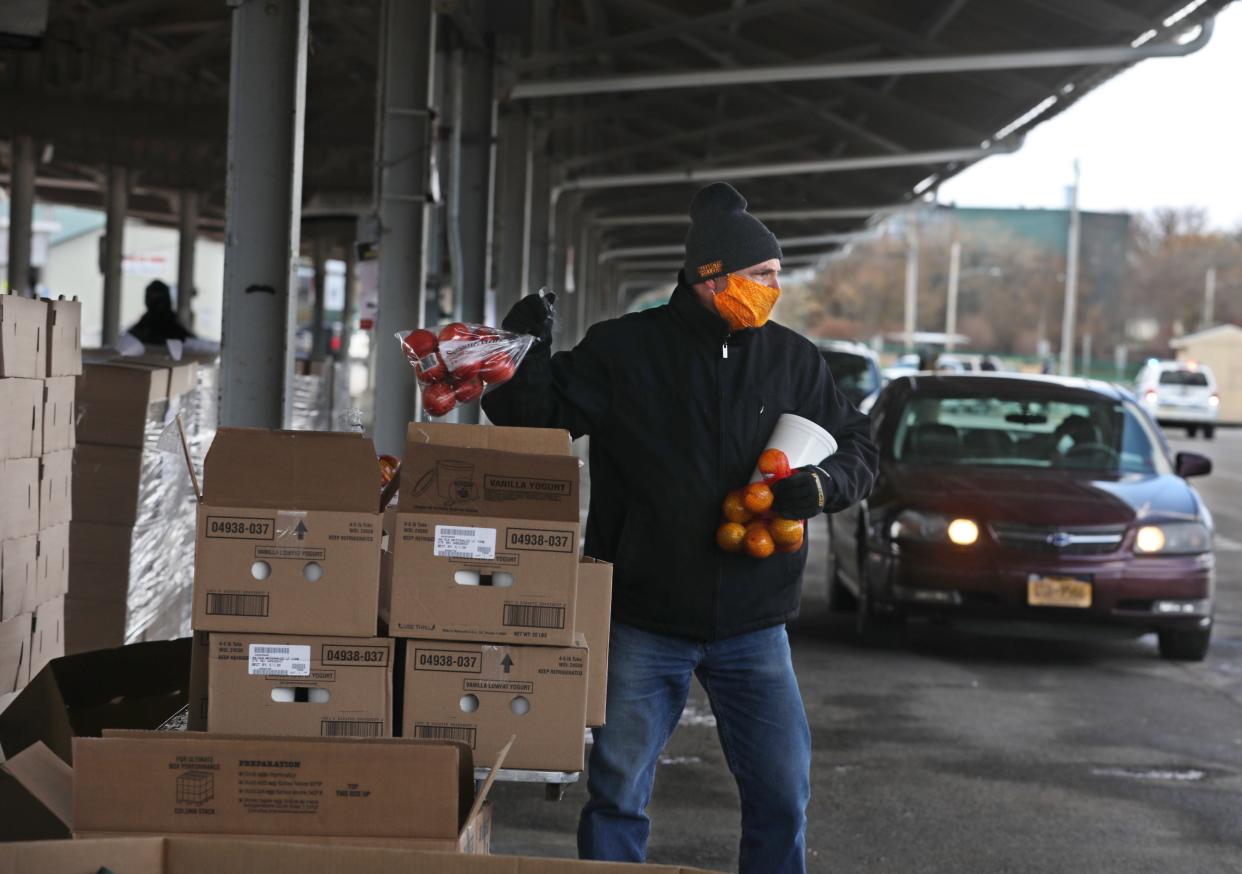Zip code in Rochester ranks third in NY state for food insecurity, new report finds

New data from Feeding America reveals the sharpest increase in food insecurity since the Great Recession.
Based on the most recent data from the "Map the Meal Gap" study, the food insecurity rate in Foodlink’s 10-county service area jumped to 12% in 2022, from 9.3% in 2021. This study offers local-level estimates of food insecurity and food costs for every county nationwide.
The one-year increase led to an additional 33,580 people experiencing food insecurity, raising the total to 151,820 in the Rochester/Finger Lakes region. The USDA defines food insecurity as a household’s occasional lack of access to sufficient food for an active, healthy life.
Although each of Foodlink’s 10 counties saw significant increases, the data shows that the 14605 zip code, which covers the Upper Falls and Marketview Heights neighborhoods in the city of Rochester, has the third-highest food insecurity rate in the state (29.8%).
“We have seen our distribution increase from a steady flow from 45 families each week, to a steady flow of 100 families, including seniors arriving and waiting in line each week for the distribution of food and home goods supplies,” LaVada Howard said.
Howard works with Straight from the Heart Community Outreach, an organization that runs a food pantry on Hudson Avenue in the 14605 zip code.
The upsurge can be linked to two main factors – the sudden rise in food inflation from 2021 to 2022 and the termination of several COVID-era federal assistance programs.
After Foodlink analyzed the monthly reports collected from its 200-plus members, including food pantries and meal programs, it found that from January to March 2024, visits to pantries and meal programs increased by 35% from the same period in 2023.
Additional data within Foodlink’s 10-county service area include:
Black and Hispanic residents are far more likely to be food insecure. In our region, 8% of white residents are food insecure, compared to 27% of Black residents and 28% of Hispanic residents.
Approximately 34% of people facing hunger do not qualify for SNAP benefits due to income thresholds.
The childhood food insecurity rate jumped from 12.5% to 17% from 2021 to 2022.
"In the short time that the Rochester Hope North Clinton Food Pantry has been open, we have come to see firsthand what food insecurity looks like in Rochester,” Dawn Burdick said. “It is in the face of a single mother that doesn't know how she'll be able to find enough food for her children while they are home during the weekend. It is seniors lining up in the cold and snow to use the food pantry three hours before the doors open. It is in people on edge as the end of the month approaches and their SNAP benefits have been exhausted. In our area of the world that is so rich in resources, it is disheartening to see the increased number of people faced with food insecurity.”
To read the latest Map the Meal Gap report, visit Map.FeedingAmerica.org.
Editor’s note: The headline of this story has been updated to correct an error regarding the geographic area that ranks third in New York state for food insecurity.
Justice Marbury is the 19th Ward Reporter. She loves her energetic puppy, Hiro. Contact her on Instagram @justice_marbury and by email at jmarbury@gannett.com.
This article originally appeared on Rochester Democrat and Chronicle: Zip code in ranks third in NY for food insecurity, new report finds

